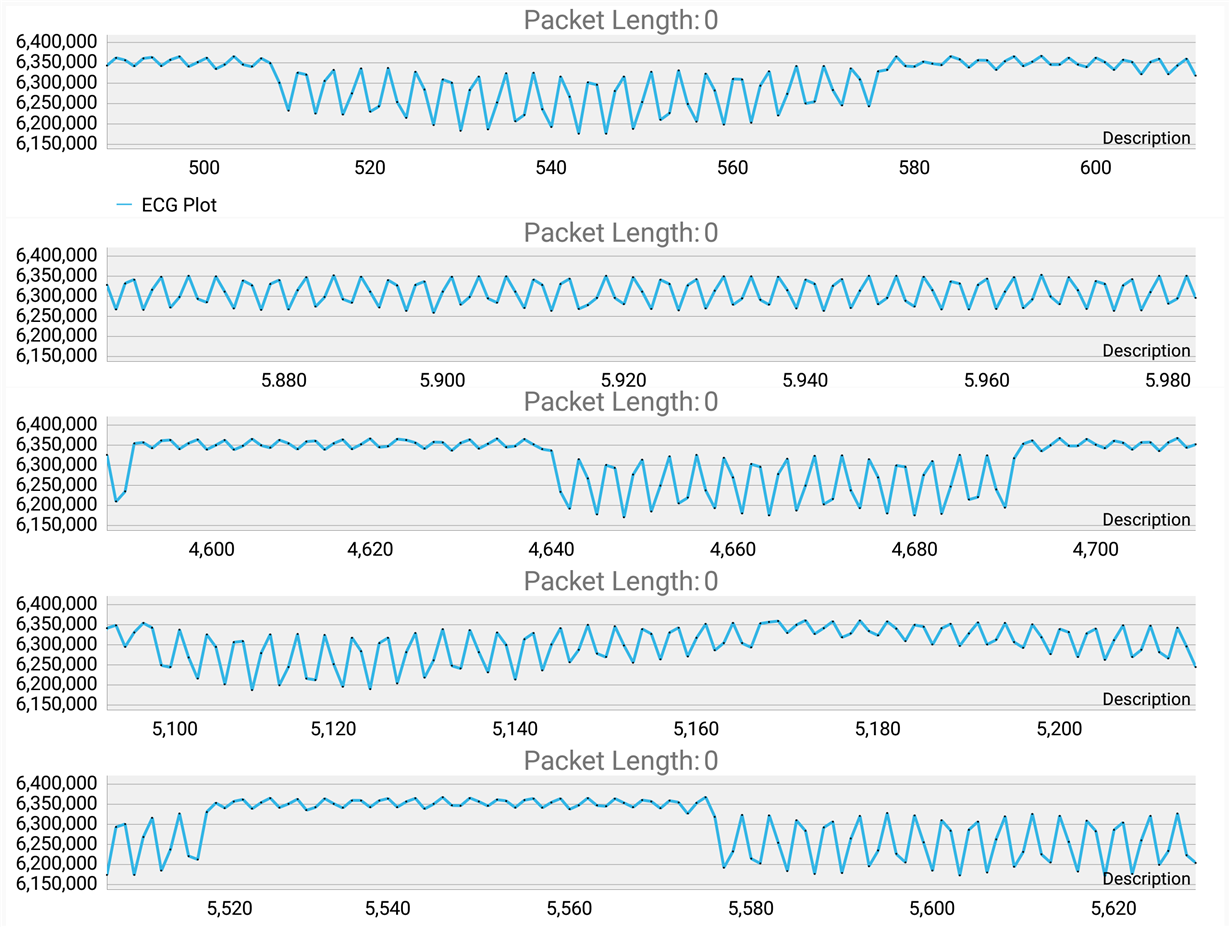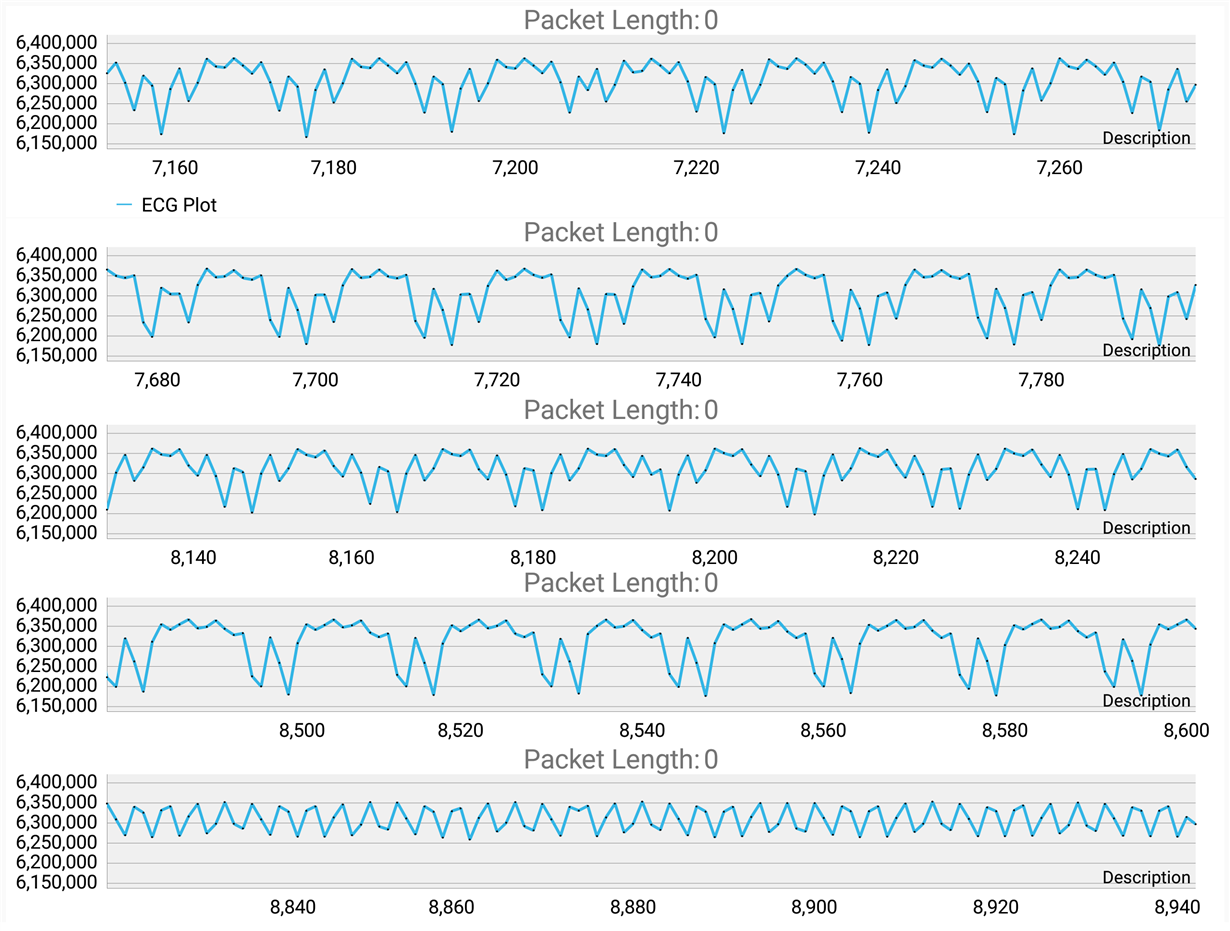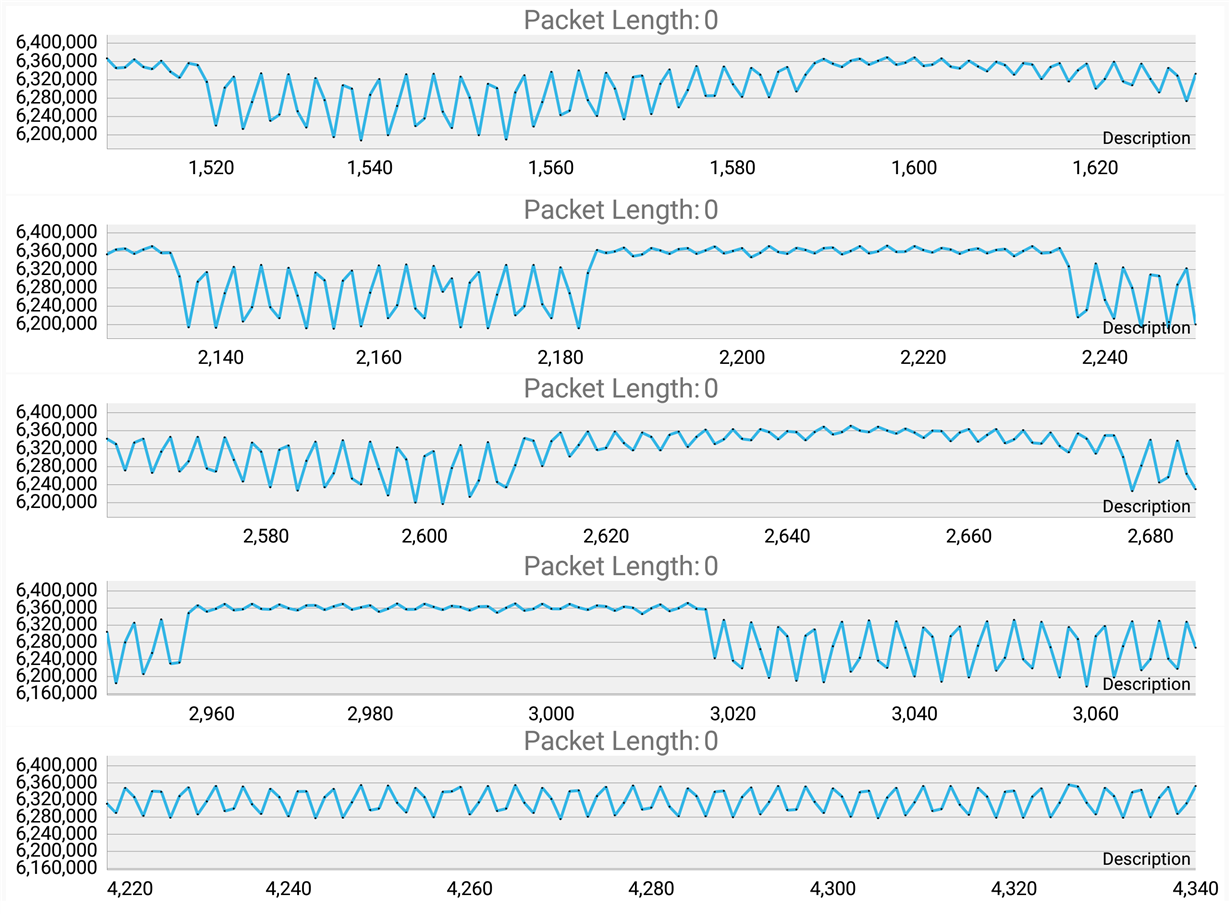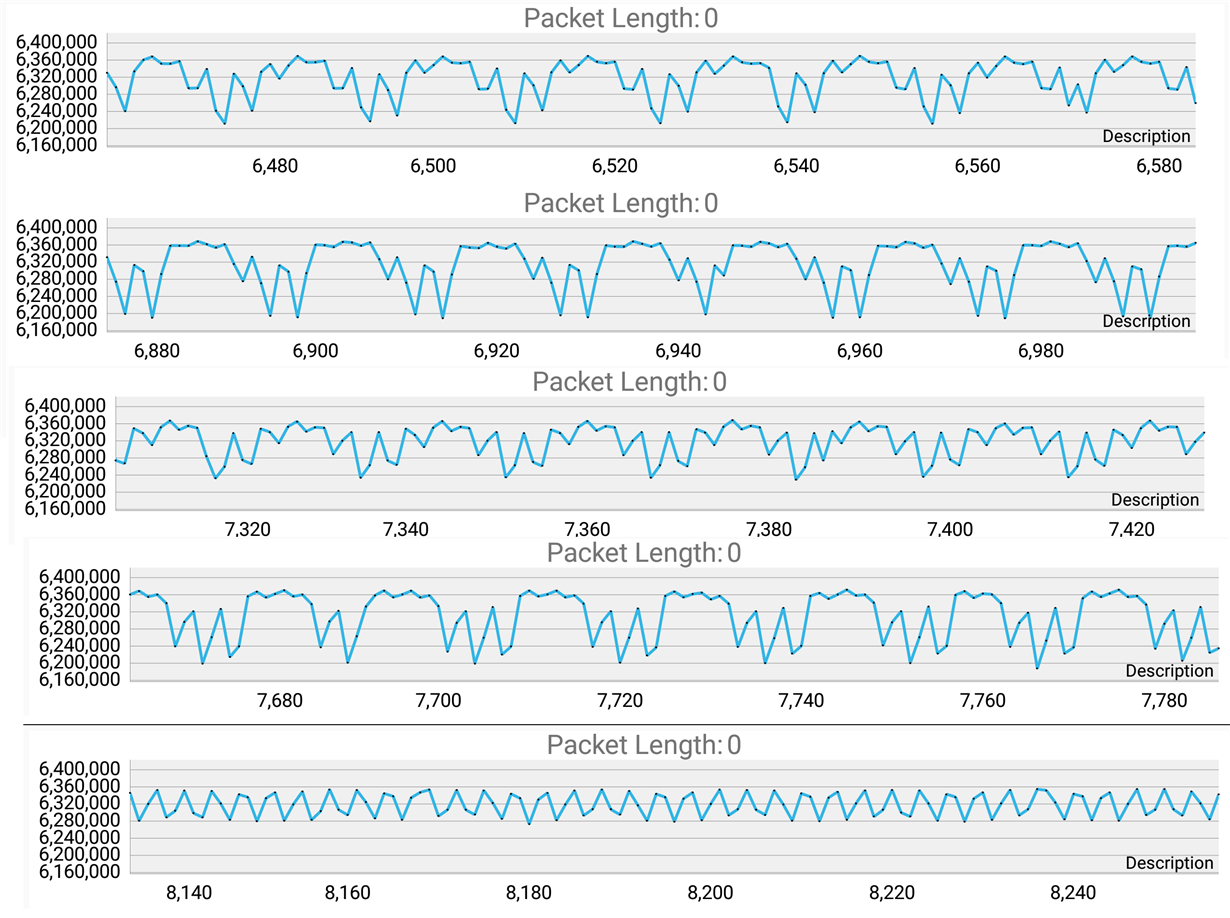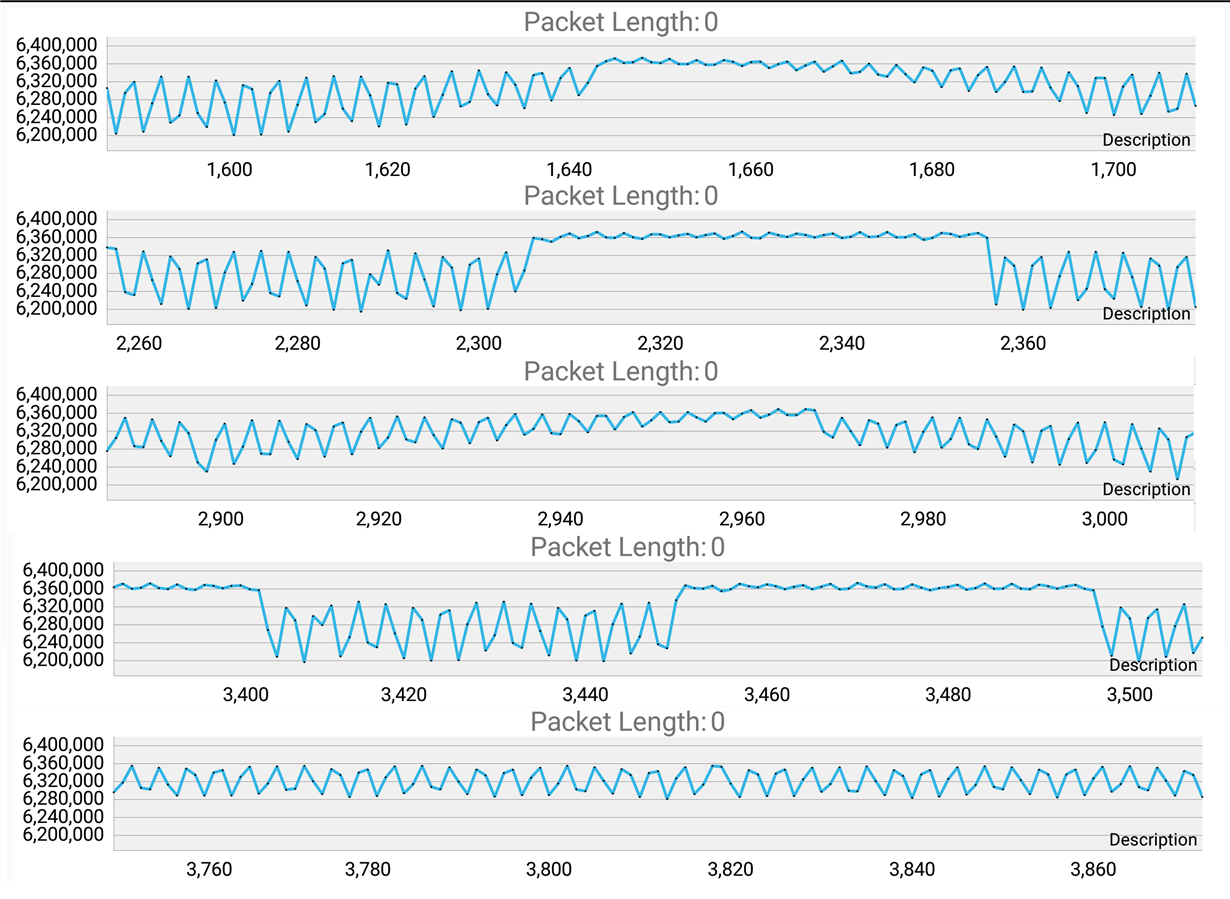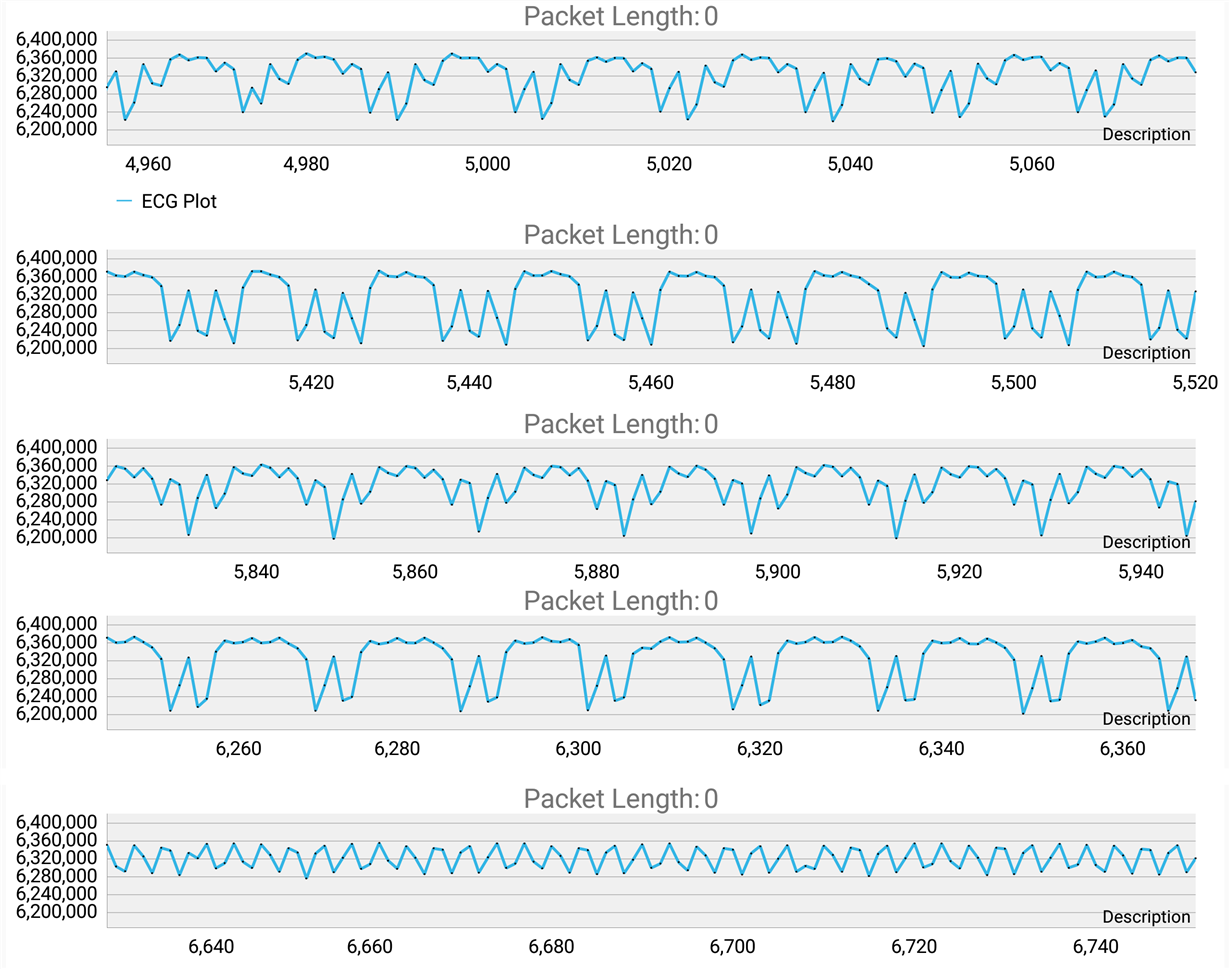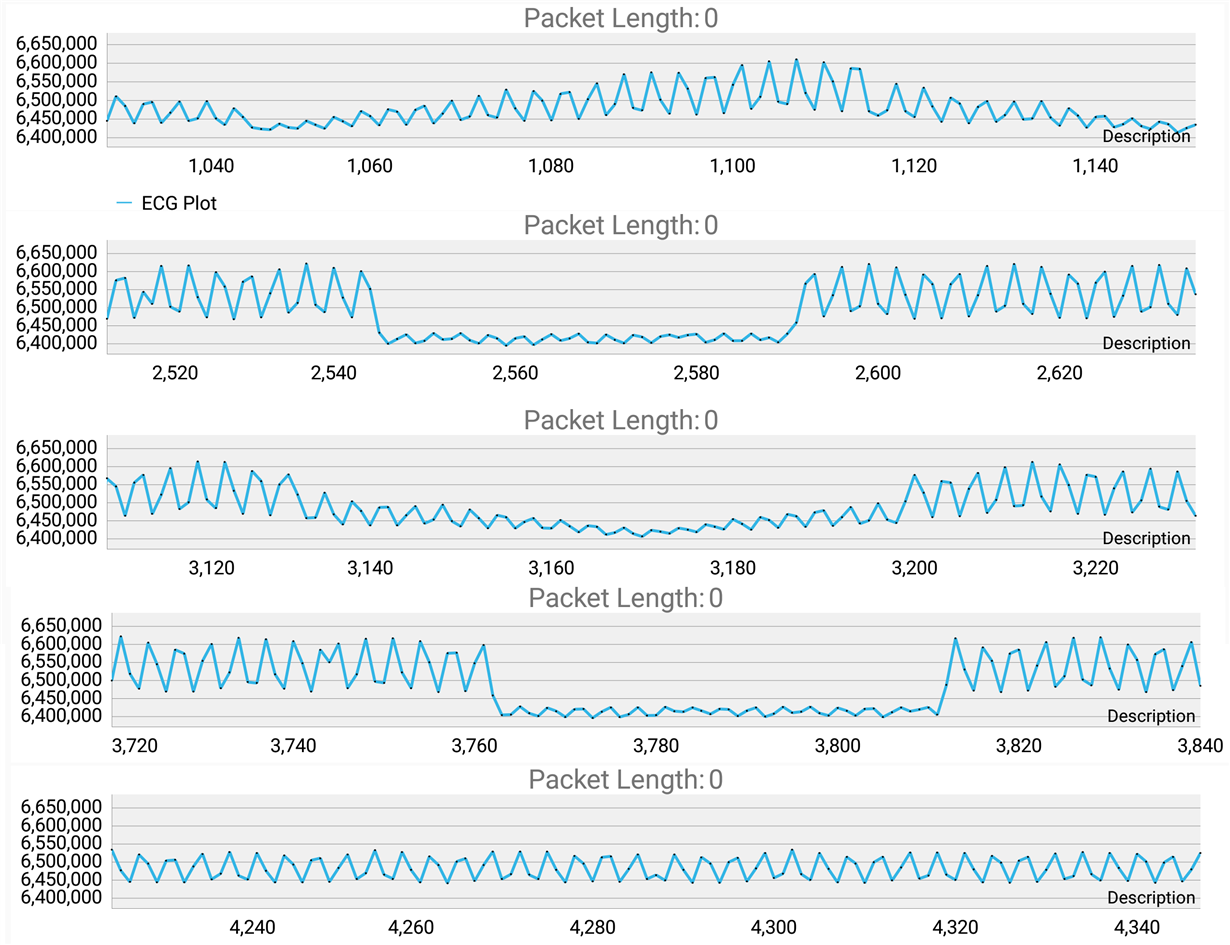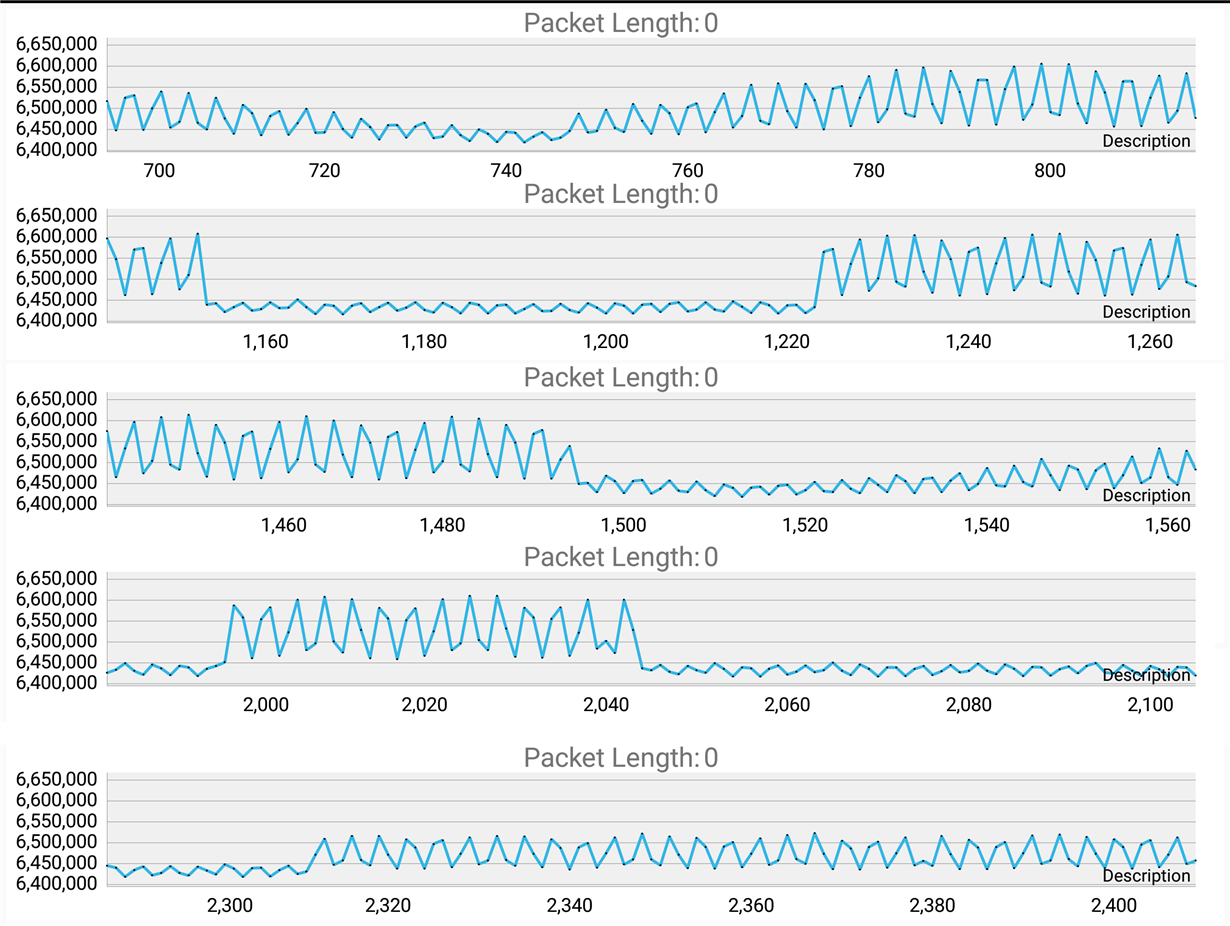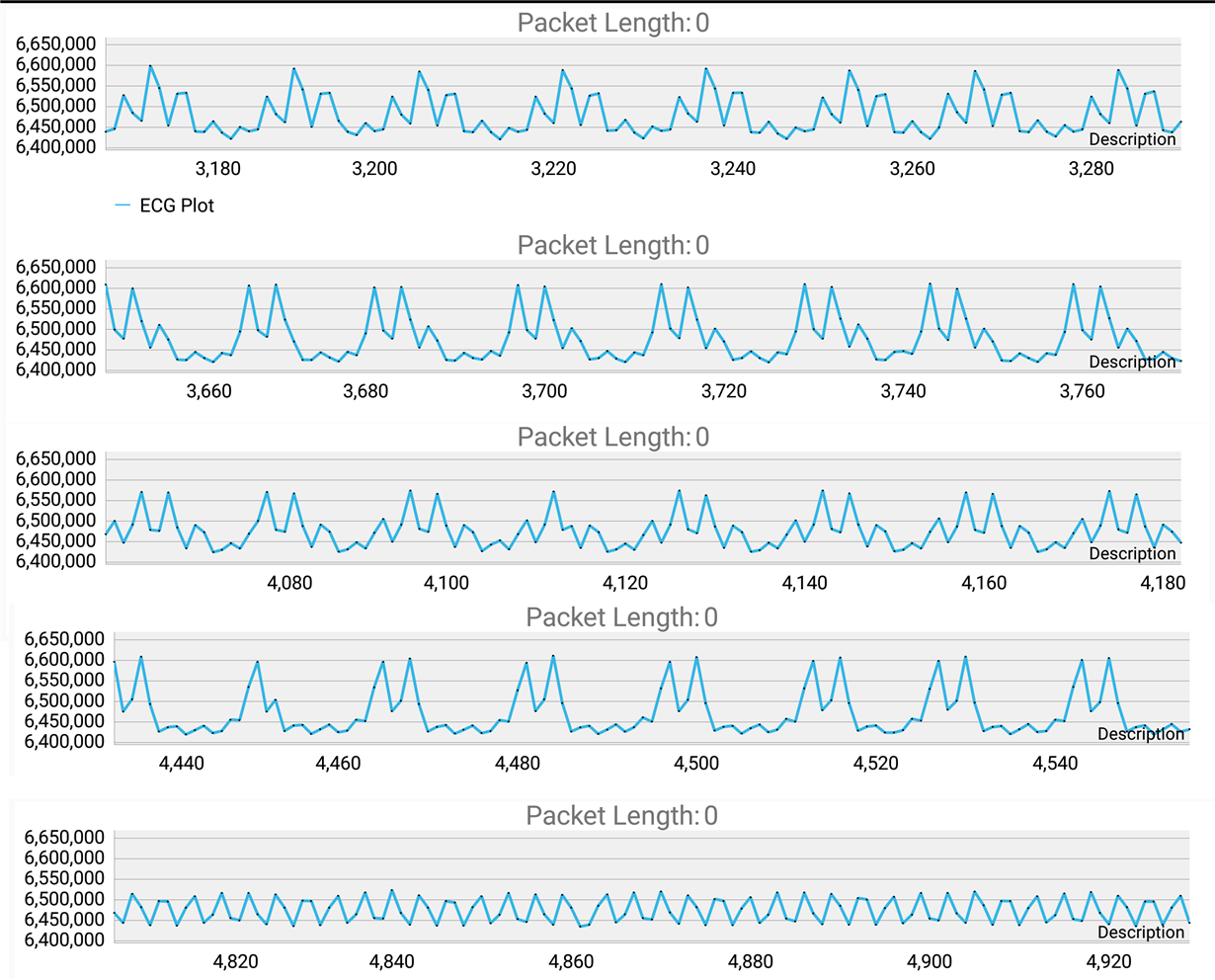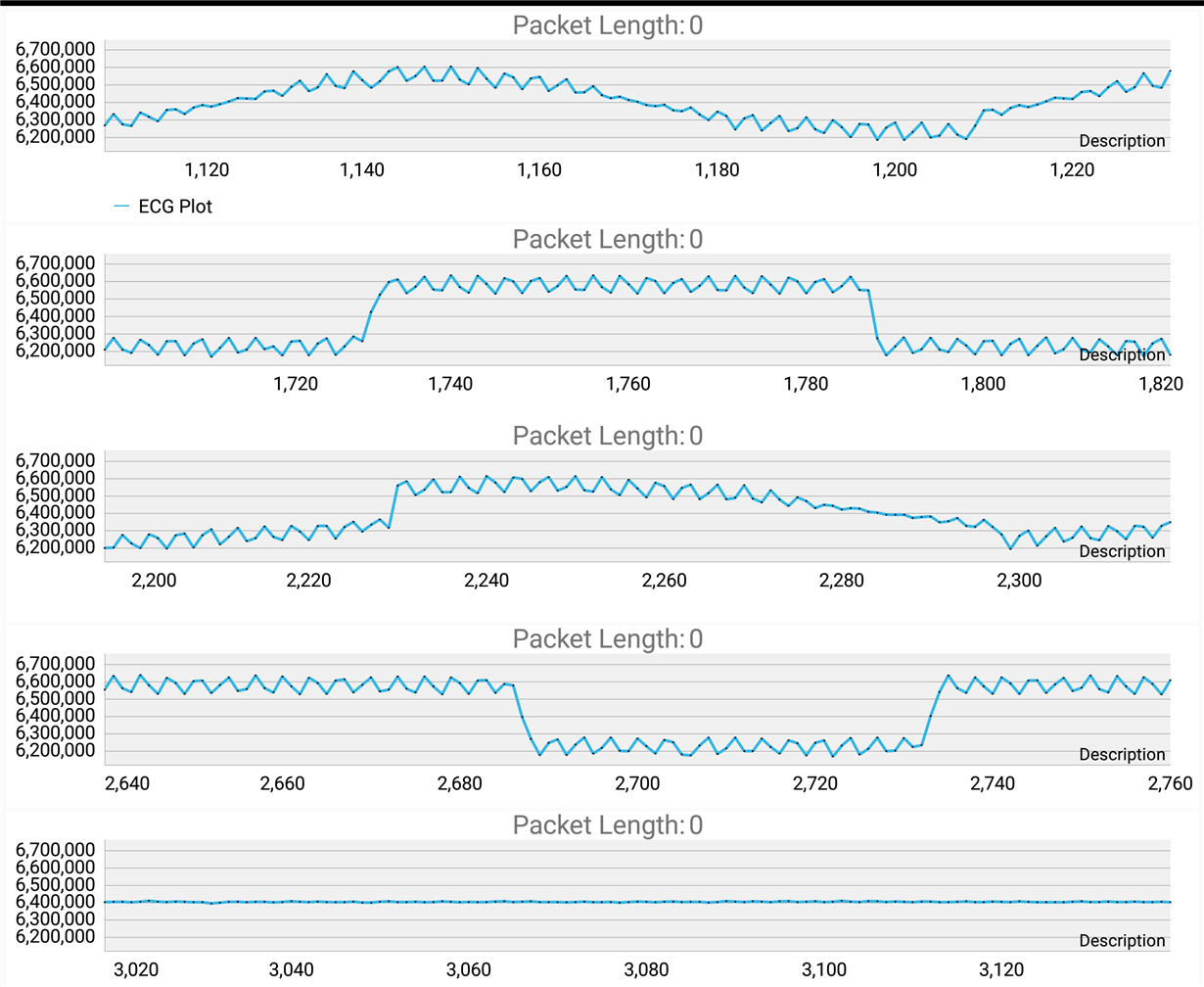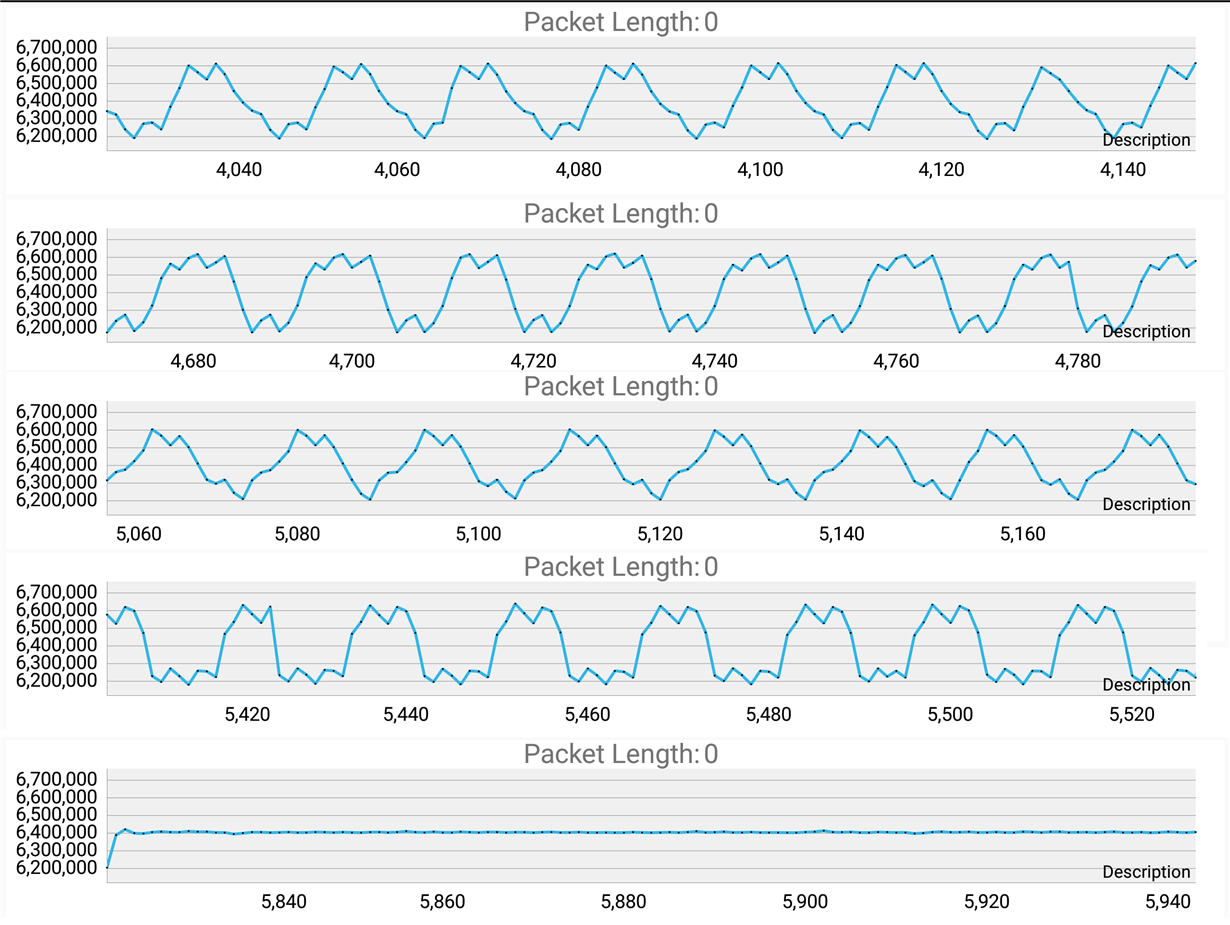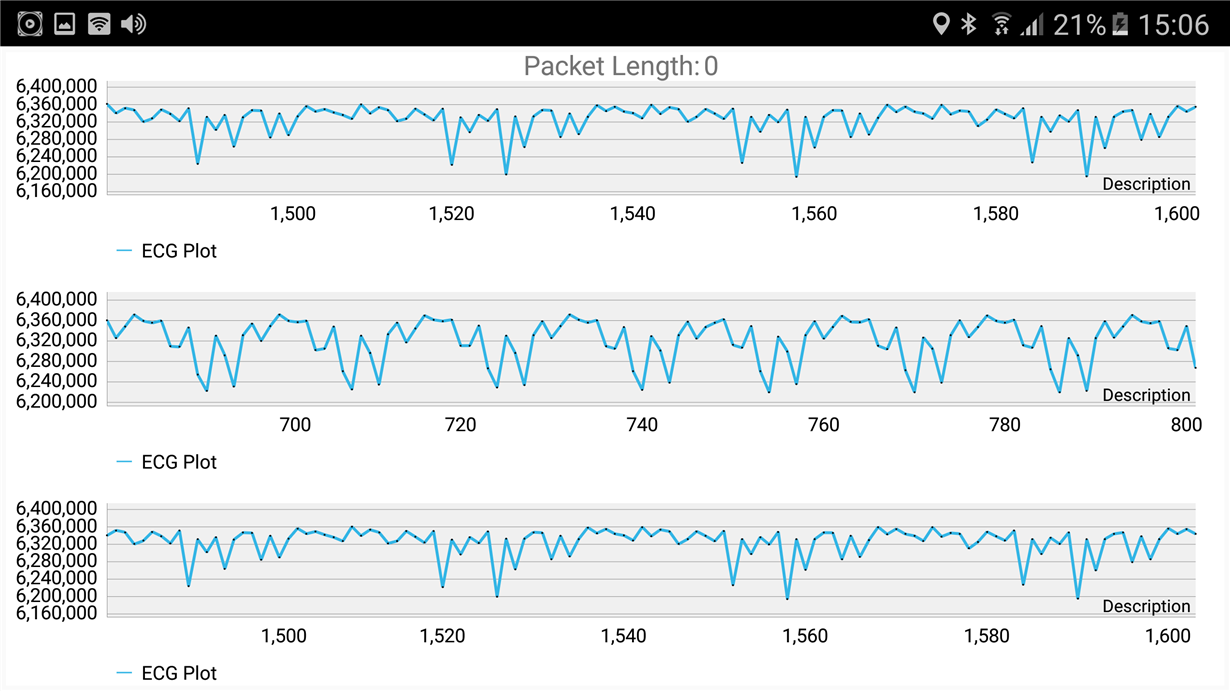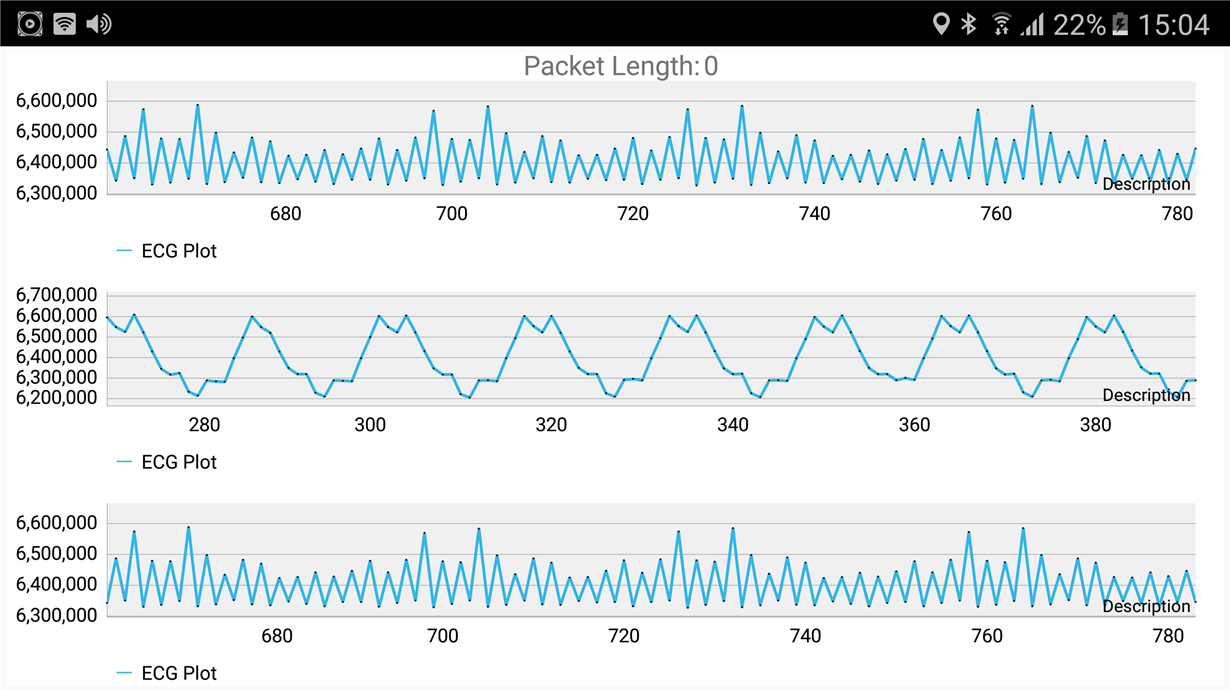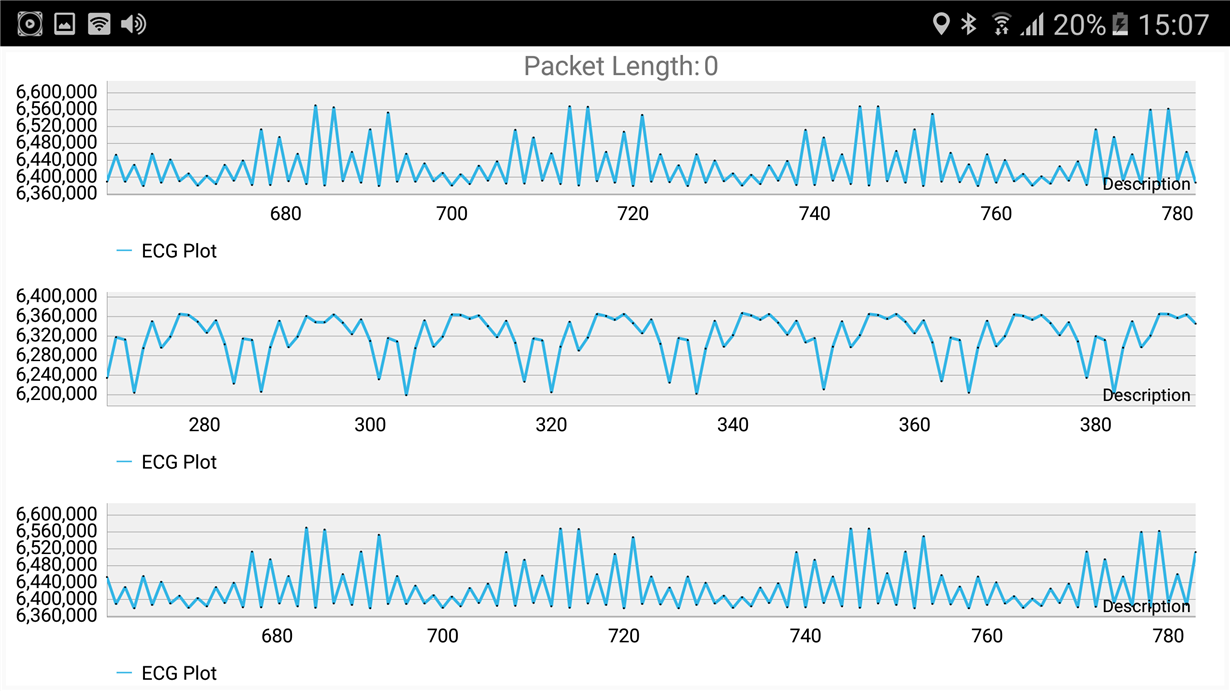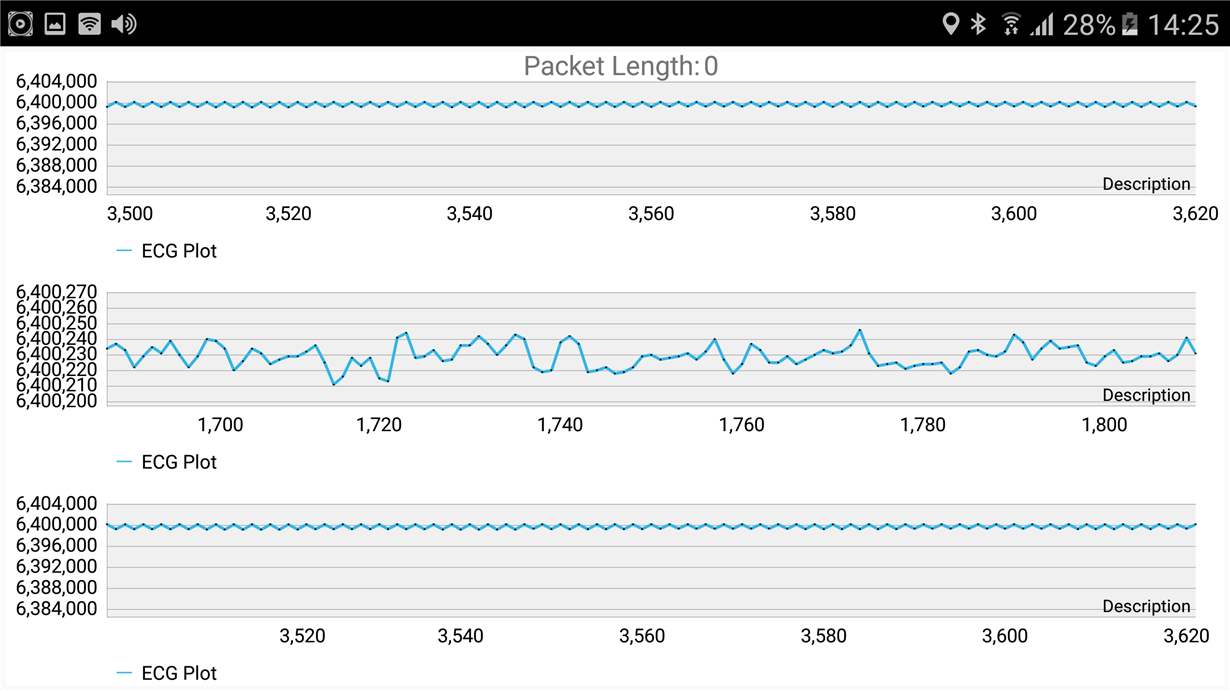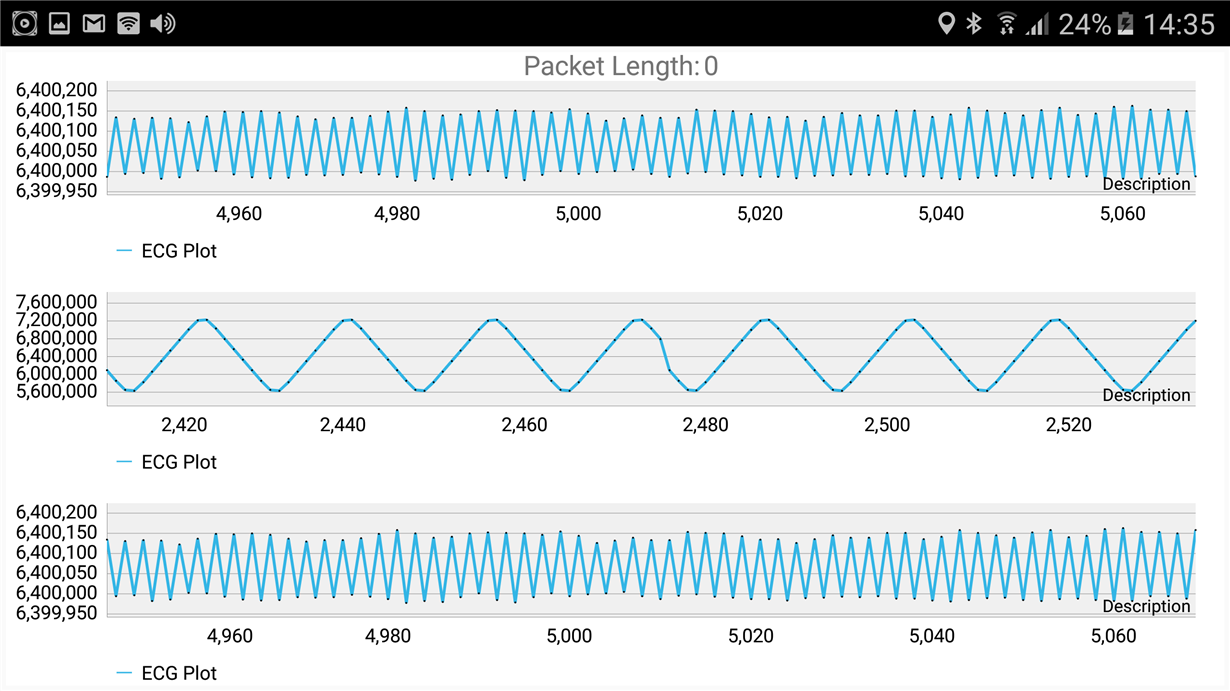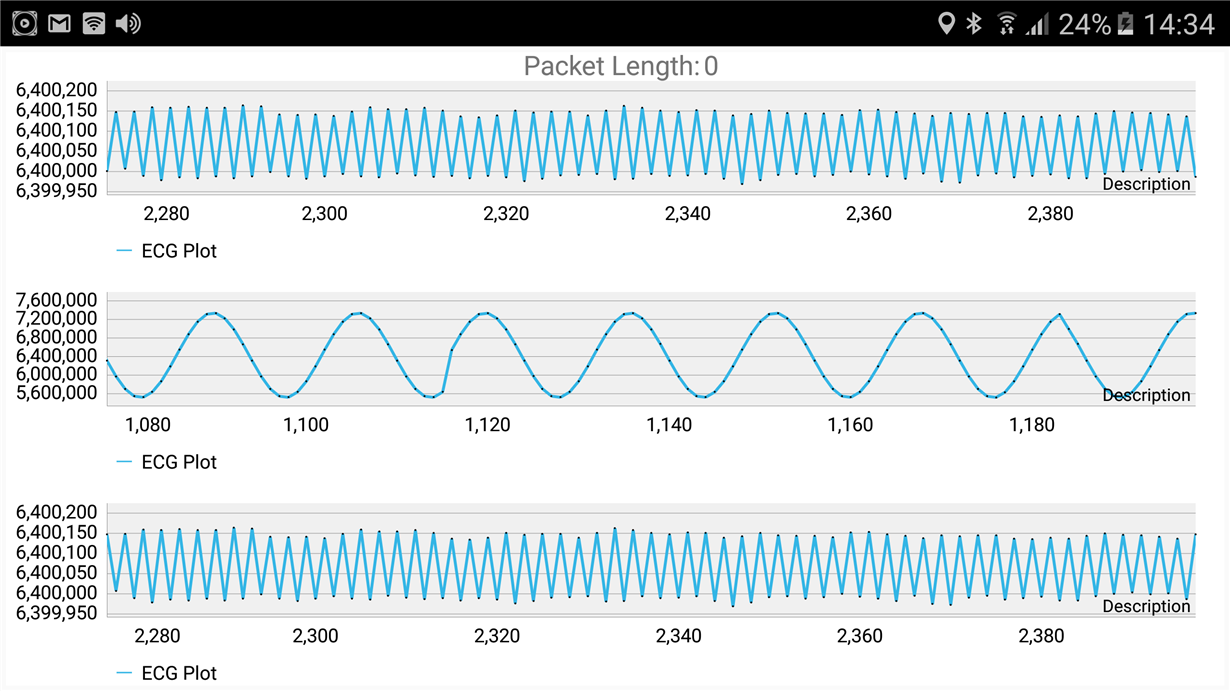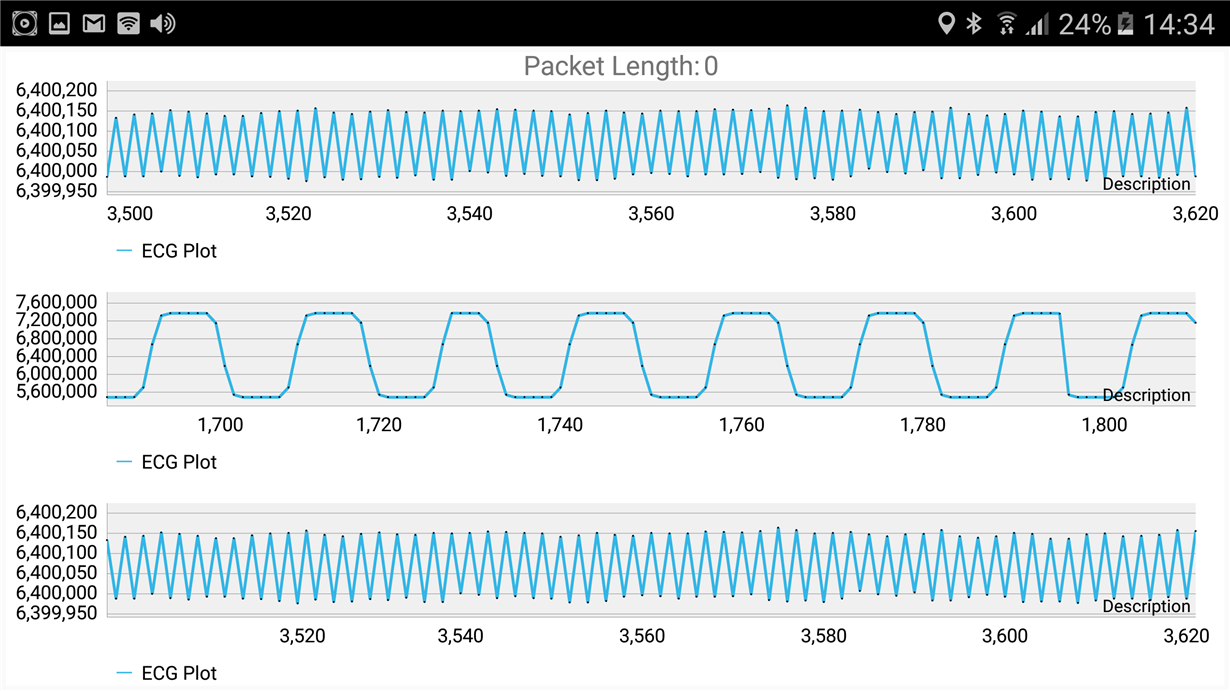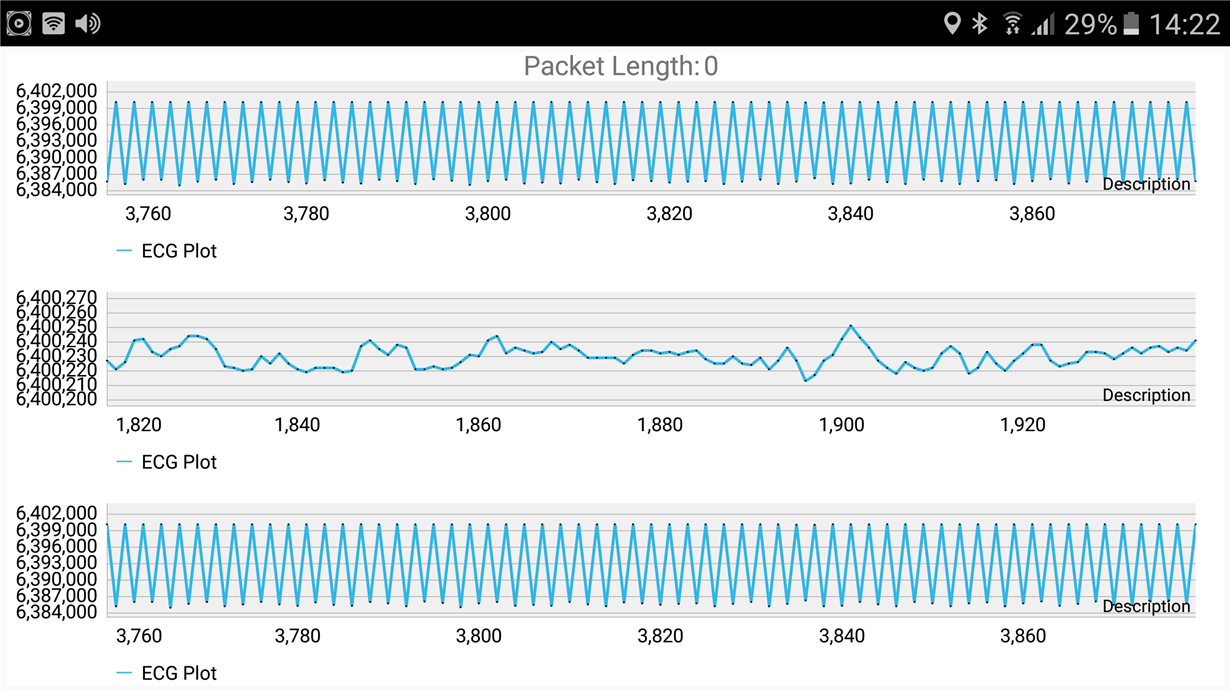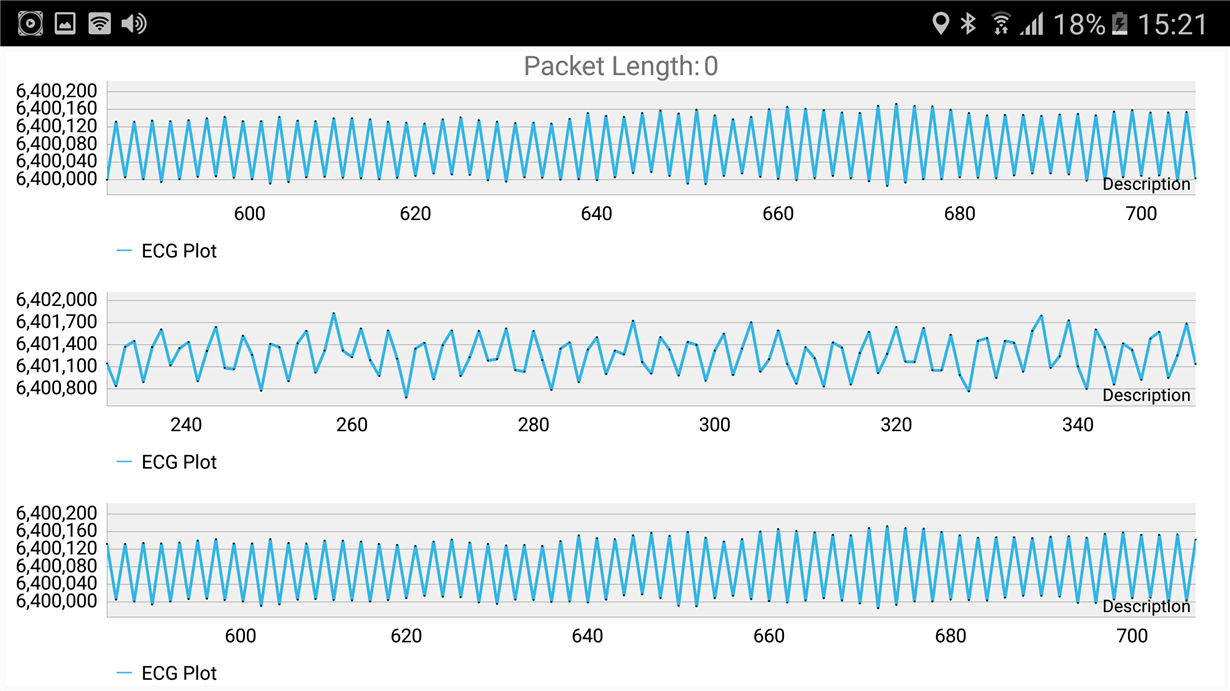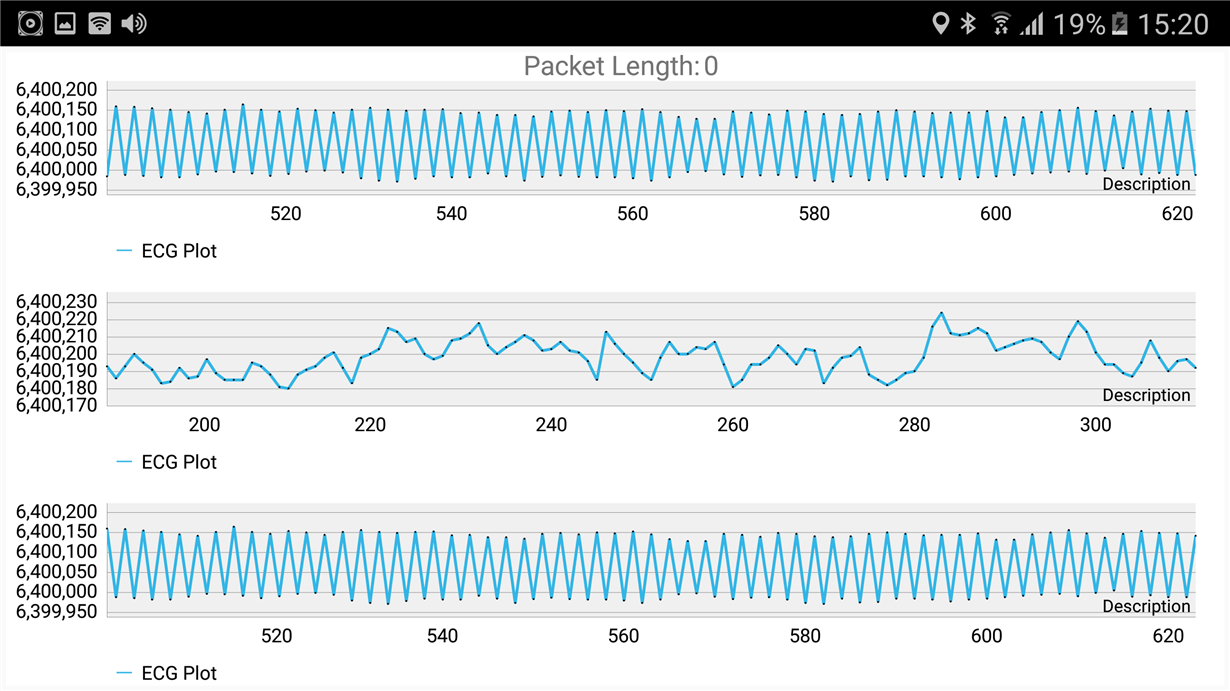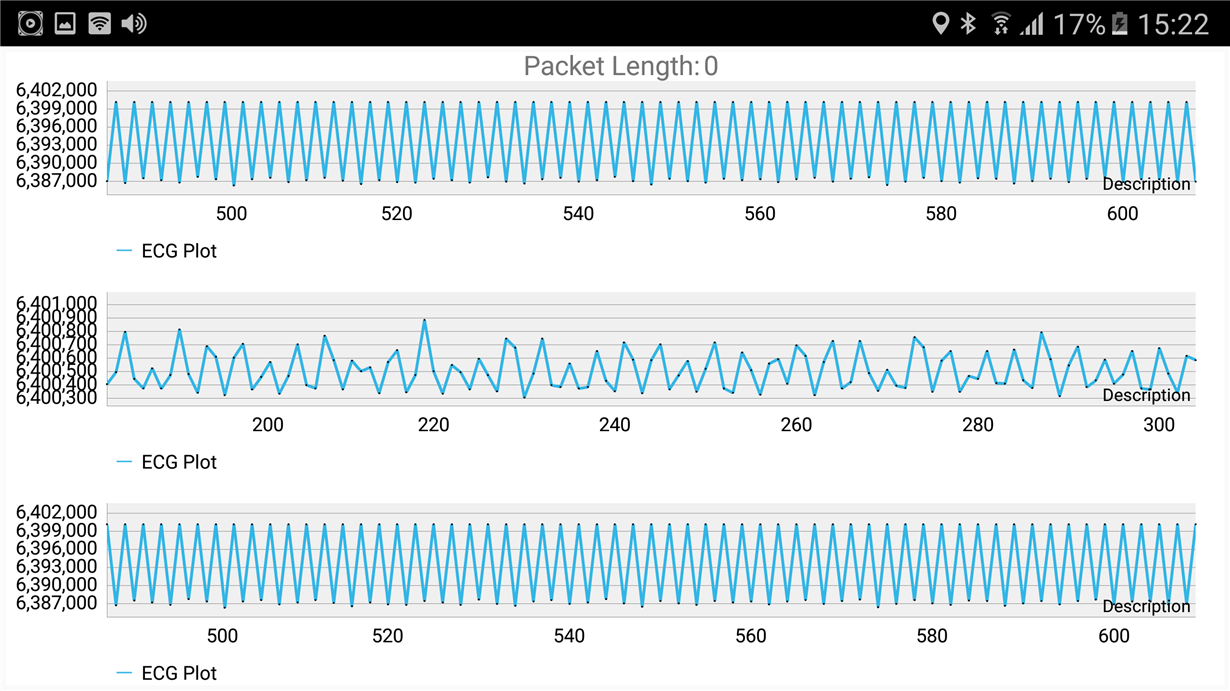I am working on a slightly modified project TIDA-00096 (CC2541 + ADS1293) with originally provided firmware. Since I have been receiving very noisy ECG data from human body when plotting it in Android app, I have attached function waveform generator to various combinations directly to electrodes. I have skipped some combinations though, since there wasn't any change in the signal with different waveform settings.
Frequency was set to either 1 Hz or 10 Hz at 200 mV. The shapes of the input in graphs below were always in this order: sine, square, ramp, pulse and noise. I have kept sampling rate in firmware at the default value.
I was wondering if the results below are normal? What is the cause of this noise and how may I filter it? Is this a hardware or a software issue?
Thanks for help in advance.
LL- LA channel1 1Hz
LL- LA channel1 10Hz
LL- LA channel2 10Hz
LL- V1 channel2 1Hz
LL- V1 channel2 10Hz
LL-RA channel1 1Hz
LL-RA channel1 10Hz
LL-RA channel2 1Hz
LL-RA channel2 10Hz


